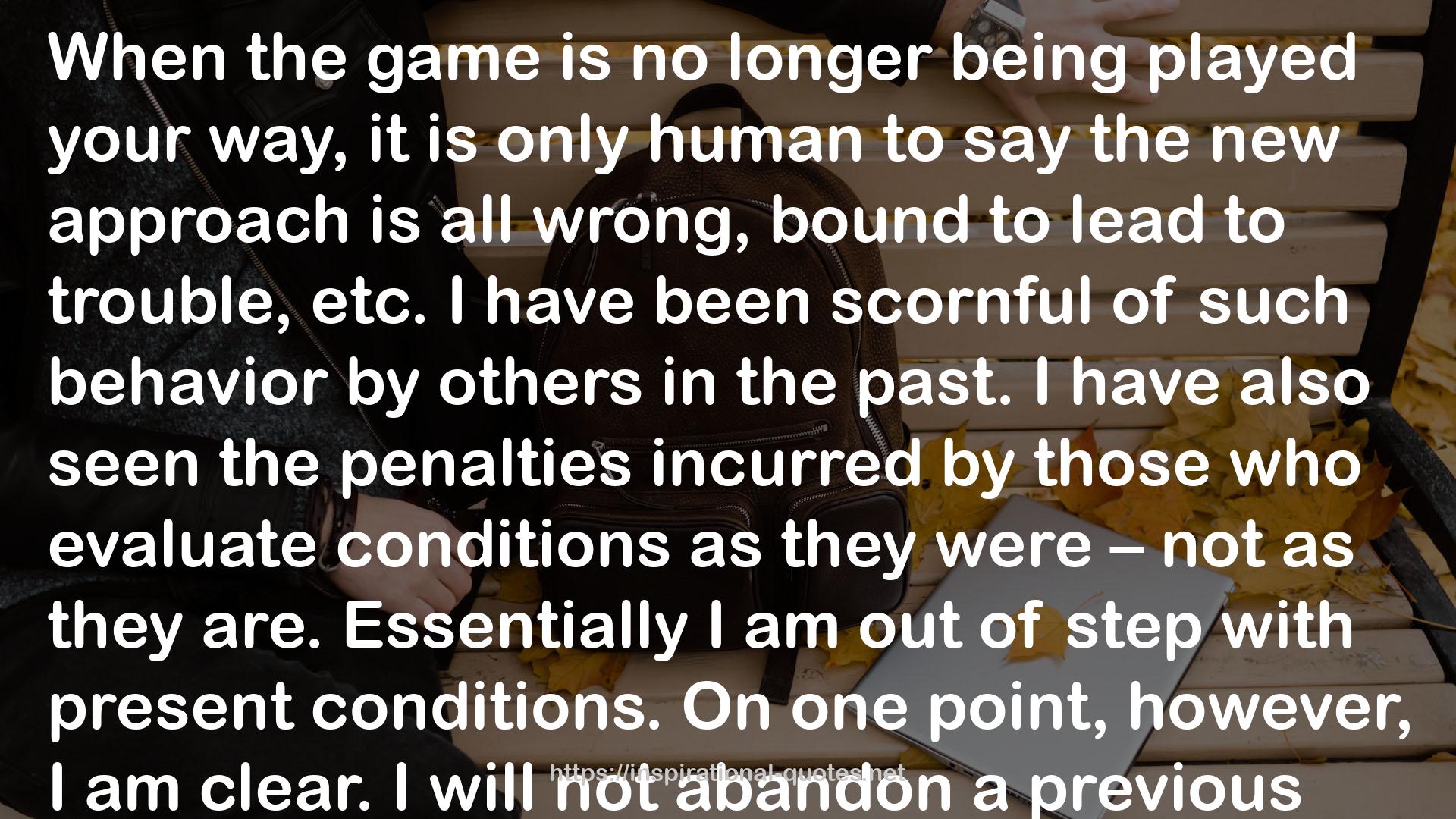1
" When the game is no longer being played your way, it is only human to say the new approach is all wrong, bound to lead to trouble, etc. I have been scornful of such behavior by others in the past. I have also seen the penalties incurred by those who evaluate conditions as they were – not as they are. Essentially I am out of step with present conditions. On one point, however, I am clear. I will not abandon a previous approach whose logic I understand even though it may mean foregoing large, and apparently easy, profits to embrace an approach which I don't fully understand, have not practiced successfully and which, possibly, could lead to a substantial permanent loss of capital.6 "
― Michael Batnick , Big Mistakes: The Best Investors and Their Worst Investments
5
" In Tsai's go‐go years, high‐flying stocks with positive momentum were all the rage. Polaroid, Xerox, IBM all traded at price‐to‐earnings ratios of more than 50. These expensive stocks were supported by explosively high growth rates. From 1964 to 1968, IBM, Polaroid, and Xerox grew their earnings per share at 88%, 22%, and 171%, respectively. Others like University Computing, Mohawk Data, and Fairchild Camera traded at several‐hundred times their trailing 12‐month earnings. The latter three and many others like them would go on to lose more than 80% in the 1969–1970 bear market. The Manhattan Fund was up almost 40% in 1967, more than double the Dow. But in 1968, he was down 7% and was ranked 299th out of 305 funds tracked by Arthur Lipper.16 When the market crash came, the people responsible were entirely unprepared. By 1969, half of the salesmen on Wall Street had only come into the business since 196217 and had seen nothing but a rising market. And when stocks turned, the highfliers that went up the fastest also came down the fastest. For example, National Student Marketing, which Tsai bought 122,000 shares for $5 million, crashed from $143 in December 1969 to $3.50 in July 1970.18 Between September and November 1929, $30 billion worth of stock value vanished; in the1969‐1970 crash, the loss was $300 billion!19 The gunslingers of the 1960s were thinking only about return and paid little attention to risk. This carefree attitude was a result of the market they were playing in. From 1950 through the end of 1965, the Dow was within 5% of its highs 66% of the time, and within 10% of its highs 87% of the time. There was virtually no turbulence at all. From 1950 to 1965, the only bear market was “The Kennedy Slide,” which chopped 27% off the S&P 500, and recovered in just over a year. "
― Michael Batnick , Big Mistakes: The Best Investors and Their Worst Investments
12
" Amazon is up a whopping 38,600% since its 1997 IPO, compounding at 35.5% annually. This would have grown a $1,000 investment into $387,000 today. But the degree of difficulty of actually turning that $1,000 into $387,000 20 years later cannot be overstated. See, Amazon got cut in half three separate times. On one of those occasions, from December 1999 through October 2001, it lost 95% of its value! Over that time, the hypothetical $1,000 investment would have shrunk from a high of $54,433 down to $3,045, a $51,388 loss. So you see why looking at a long‐term winner and wishing you had bought in is a fool's errand. “Man I should have known Amazon was going to change the world.” Fine, perhaps you should have. But even if you had that information, it would not have made it any easier to hang on for the ride. "
― Michael Batnick , Big Mistakes: The Best Investors and Their Worst Investments

